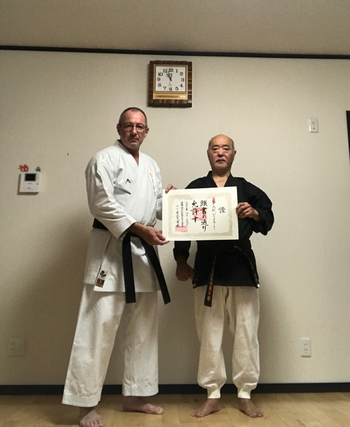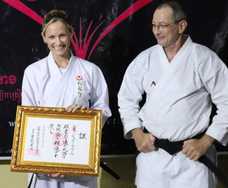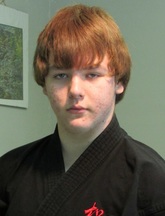NEWS-NACHRICHTEN
- welcome to andre monteiro Barros from brazil
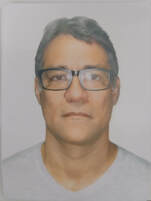
I'm 56 years old, I'm a retired Captain of the Brazilian Army.
I started in martial arts at the age of 6 at the hands of my Father training Box and Jiu Jitsu. At the age of 13, I started practicing Karate Do Shotokan, training until I was 19, reaching the brown belt, when I started my
military career. After 22 years I return to the path of martial arts training and graduating in the following martial arts:
instructor of Krav Maga brown belt (by Gran Master Yaron Lichtenstein); Nidan in Hakkoryu Jujutsu(by Shihan Bonilla) and Nidan Hakkodenshin Ryu Jujutsu(by Soke Antonio Garcia);
Shodan in Byakuren Karate(by Renshi Flávio Nabeiro).
As a member of Matsusokan, I wish to learn and transmit the traditional teachings of Okinawan martial arts, thus contributing to the preservation of these arts, the culture of Okinawa, as well as collaborating for the healthy development of the society
where I live.
I started in martial arts at the age of 6 at the hands of my Father training Box and Jiu Jitsu. At the age of 13, I started practicing Karate Do Shotokan, training until I was 19, reaching the brown belt, when I started my
military career. After 22 years I return to the path of martial arts training and graduating in the following martial arts:
instructor of Krav Maga brown belt (by Gran Master Yaron Lichtenstein); Nidan in Hakkoryu Jujutsu(by Shihan Bonilla) and Nidan Hakkodenshin Ryu Jujutsu(by Soke Antonio Garcia);
Shodan in Byakuren Karate(by Renshi Flávio Nabeiro).
As a member of Matsusokan, I wish to learn and transmit the traditional teachings of Okinawan martial arts, thus contributing to the preservation of these arts, the culture of Okinawa, as well as collaborating for the healthy development of the society
where I live.
welcome to mark cartwright from Sylvania, georgia usa
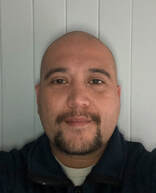
Mark has Shodan rank in Taekwondo and will be crossing over to Okinawan Matsusokan Karate and Kobudo and will hold a temporary rank of Shodan.
welcome to new member d. Alejandro Tena Sebastian, from Spain

I started with Karate in 1994 in Madrid, Spain, my style is Okinawa Naha Te.
I have 4 dojos in Madrid, Spain with approximately 58 students. At the present time I am a Roku- Dan (6th dan).
welcome to new member joel williams from Anderson, S. Carolina

I began my martial arts journey in high school in Shotokan Karate. After training for several years I went off to college and stopped training but always wanted to get back into the martial arts. Once I had a young son who showed interest, I also started training again. I now hold a 1st Dan in the Korean art of Kuk Sool and a 1st Dan in Combat Hapkido. I am a BJJ blue belt and I actively study in a Krav Maga Instructor program. I’ve always had an interest in genuine, traditional Okinawan karate and have cross-trained in several styles over the years. I am now actively training in Matsumura Seito Shorin Ryu and Okinawan Crane Karate (in the lineage of Hanshi Yabiku). I also train in kobudo under a separate instructor. Aside from the lineage connection, what appeals to me about the Okinawa Matsusokan Traditional Karate Association is the no style barriers philosophy of embracing Shurite, Nahate, Tomarite, and family styles under one Okinawan karate umbrella. I hope to network and create friendships within the organization. Once I retire from my professorship at the university I want to devote myself full-time to preserving Okinawan karate and teaching real, effective self-defense.
welcome to new member Robert Yarborough from San Antonio, Texas

My study of the martial arts began informally with a neighbor that had studied Judo in the service. He taught my friends and me how to fall; that was pretty much it. My formal training started in 1974 (age 14) with Kempo under Dave de la Santos. I received my Shodan in 1979. I join the military (Army Helicopter Pilot) the same year and was stationed in Germany where I studied Shotokan and Shorinryu Karate from 80-84. I returned home and to Kempo under Dave’s student Chester Israel for two years before returning to military service (USAF Pilot).
I opened my first Dojo in 84 and taught Kempo until I returned to Germany in 93. I also studied Taekwondo and Hapkido during this time. From 94 to 97 I taught on several bases (Ramstein AB, Miesau Depot, and Rhine Ordnance Barracks) and served as Germany Director for the ICHF and ITJA. In 97, I was inducted in the WHFSC Hall of Fame as ICHF Hapkido Instructor of the Year.
I taught Taekwondo and Hapkido in Texas (97-00) and Alabama (00-03), and served as State Director for the ICHF in both states. I retired from teaching new students (left that to my yondan wife) in 03 and worked with my Yudansha students who had schools of their own. I retired from the USAF in 2005.
I received my Kempo Godan in 2001. I also hold Godan in Tangsoodo, Rokudan in Taekwondo, Nidan in Moohakkwan Hapkido, Yondan in Combat Hapkido, and Nidan in Shotokan. I also studied Aikido, Jujitsu, and Budo Taijutsu over the years. At present time I am only practicing and teaching Okinawan and Japanese mainland styles.
I opened my first Dojo in 84 and taught Kempo until I returned to Germany in 93. I also studied Taekwondo and Hapkido during this time. From 94 to 97 I taught on several bases (Ramstein AB, Miesau Depot, and Rhine Ordnance Barracks) and served as Germany Director for the ICHF and ITJA. In 97, I was inducted in the WHFSC Hall of Fame as ICHF Hapkido Instructor of the Year.
I taught Taekwondo and Hapkido in Texas (97-00) and Alabama (00-03), and served as State Director for the ICHF in both states. I retired from teaching new students (left that to my yondan wife) in 03 and worked with my Yudansha students who had schools of their own. I retired from the USAF in 2005.
I received my Kempo Godan in 2001. I also hold Godan in Tangsoodo, Rokudan in Taekwondo, Nidan in Moohakkwan Hapkido, Yondan in Combat Hapkido, and Nidan in Shotokan. I also studied Aikido, Jujitsu, and Budo Taijutsu over the years. At present time I am only practicing and teaching Okinawan and Japanese mainland styles.
welcome to new member Aleksa bijelovic' from victoria park aus.
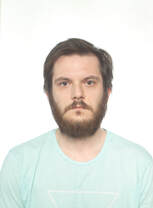
I'm practicing Shorin Ryu of Shoshin Nagamine and Yamanni Ryu of Chogi Kishaba, as interpreted, refined and taught through Kensei Taba lineage.
My martial experience so far is modest and I don't hold any rank but I take my study seriously, trying to emulate old ways of Karate and Kobudo. It is a personal journey and a continuous study of ancient Ryukyu – exploring history, culture and martial concepts behind it.
I am here because I'm eager to learn more about Takaya Yabiku art – Shinzan Ryu, its background, Kata and principles. Happy to be a part of Matsusokan.
My martial experience so far is modest and I don't hold any rank but I take my study seriously, trying to emulate old ways of Karate and Kobudo. It is a personal journey and a continuous study of ancient Ryukyu – exploring history, culture and martial concepts behind it.
I am here because I'm eager to learn more about Takaya Yabiku art – Shinzan Ryu, its background, Kata and principles. Happy to be a part of Matsusokan.
Welcome to new member Daniel daley from boston. ma usa

Like many an American kid, I took karate lessons at my local YMCA, earning a whole two yellow stripes in Shotokan - I had a bit of a brain freeze during Heian Shodan, if I recall correctly. After Shotokan I had a whole semester of judo in college, and later studied some jujutsu. I have amassed no belt rank to speak of, and look forward to joining the Kyu ranks, working my way up to Shodan. I am in graduate school currently, close to finishing an MBA; school has taught me to research well, and as such have found Shorin Ryu. I am drawn to the non-competitive aspect of Shorin Ryu, with its emphasis on practicality.
Further, I have a colleague who had studied Kyusho, through a popular US karateka, so I am aware of the subtle bunkai applications of kata elements. One night in jujutsu, my instructor showed us an application of what the rest of the world would think of as a "down block;" when applied to the back of my tricep, it was indeed an eye-opening experience.
Further, I have a colleague who had studied Kyusho, through a popular US karateka, so I am aware of the subtle bunkai applications of kata elements. One night in jujutsu, my instructor showed us an application of what the rest of the world would think of as a "down block;" when applied to the back of my tricep, it was indeed an eye-opening experience.
welcome to new member Jacob Mc Calmon from Franklin, tn Usa
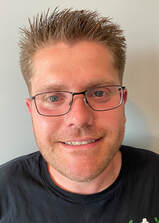
"I began my marital arts training at the age of 18. I train and teach Kajukenbo, as a fourth degree black belt. I also have a 1st degree black belt in American Freestyle Karate, and I trained in Brazilian Jiu Jitsu for 2.5 years (though I hold no formal rank). I've always been fascinated with the martial arts, and I feel that I will learn much from the Matsusokan system; I am looking forward to continuing to learn as a student as a means to be an ever improving teacher."
welcome to new member Michael escarra from Ponchatoula, LA USA

I've started my studies in 1970 in the U S. Army in hand to hand for those tentative destined for Vietnam upon my release I became a student of Kyoshi Roy Osborne fothe last 46 years. I have also hade the privilege to study under the great O'Sensei Seiyu Oyata, O'Fusei Kise, Hanshi Michael Brodman, and Kyoshi Chuck Chandler to name a few.
welcome to new member Micheal Rosenquist from Norman, OK USA
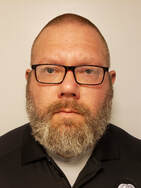
I was first introduced to
martial arts thru a Defensive Tactics program with the Oklahoma County
Sheriff's Office when they hired me as a Jailer. It turns out the
instructor for the program had a small dojo. I became a formal student
in 2005 starting my studies in Hapkido, Jujitsu, LAMECO and Kung Fu.
Unfortunately, he shut down that same year. After the school shut down I
started my training under Sensei Pat Burris (Olympian and Olympic
Coach). I had a brief but very successful run at Judo competition but a
major injury caused a premature end to my competition career. At USA
Stars I was exposed to and began studying various arts. It was also
under Sensei Pat that I learned to teach martial arts. Since 2005 I've
been awarded multiple black belts to include Judo, BJJ, Jujitsu, Kenpo
and Taiho Jutsu. I also have multiple teaching certificates such as USA
Judo National Coach, certified to teach GRACIE LE program under Royce
Gracie, etc. A couple years ago I opened a small dojo in the poor area
where I am a police officer. I teach the local kids Judo for free as a
way to reach the poverty stricken neighborhood. I've recently started
studying Okinawan Karate and greatly look forward to this journey.
welcome to new member Robert prichard from Zebulon, NC USA

I began my martial arts training with my father in Jujitsu he learned while stationed overseas in
the Army during the Vietnam Conflict. I then broadened my training by enrolling in a local martial
arts academy which taught a hybrid form of Shotokan and Tae Kwon Do. I earned my Shodan in
this style, but since I trained there the style has undergone another metamorphosis and added
elements of Tai Chi as well.
I wrestled in Highschool and took up Brazilian Jiu Jitsu afterwards for a brief period before life and
other financial obligations interfered. I joined the U.S. Army after highschool and was exposed to
several other martial arts styles which I trained in briefly. SAMBO and Shorinji Kenpo to name a couple. I then returned home and took up a training in a modern revision of Yoshin Ryu Jujitsu, the school would end up closing however and I have been left to train on my own when I can with no home school so to speak.
the Army during the Vietnam Conflict. I then broadened my training by enrolling in a local martial
arts academy which taught a hybrid form of Shotokan and Tae Kwon Do. I earned my Shodan in
this style, but since I trained there the style has undergone another metamorphosis and added
elements of Tai Chi as well.
I wrestled in Highschool and took up Brazilian Jiu Jitsu afterwards for a brief period before life and
other financial obligations interfered. I joined the U.S. Army after highschool and was exposed to
several other martial arts styles which I trained in briefly. SAMBO and Shorinji Kenpo to name a couple. I then returned home and took up a training in a modern revision of Yoshin Ryu Jujitsu, the school would end up closing however and I have been left to train on my own when I can with no home school so to speak.
welcome to new member Geoffrey Comber from Rio Ranch, NM USA

“I received my 5th Dan in July 2015, having trained in Kojosho for 32 years under Mr. Fred Absher and his senior students. While I study the history of Martial Arts in general, and follow the research of a number of top practitioners of traditional Karate, I am very focused on practicing this one system as it is quite rich and unique. The only other Art I have studied is Iai-do, having participated in a short series of classes under Art McConnell.
welcome to new member brandon evans from columbia, tn USA

Brandon ihas been practicing Wadoryu style karate and would like to change to Okinawan Karate.
So please give him a warm welcome.
So please give him a warm welcome.
welcome to new Dojo member of matsusokan Barry Wake, Sensei
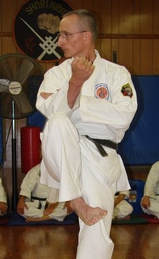
I started my martial arts training in Feb of 1972, going on 53 years of consistent regular training, and have been teaching classes and seminars for over 49 years. My focus of study has been Shorin-Ryu Karate, Hakutsuru, Kobudo, Iaido, Boxing and Kickboxing.
I have also studied Isshinryu, Kyokushin, TaeKwonDo, Judo, and Jujitsu.
They have all helped me to understand proper movement , relaxation in and kinematics of motion, kinetic energy and energy transfer.
They all, have also, taught me how to be a better person than I was the day before.
I was a trainer and corner man for Team Sparta Fight Club in Warrenton and Fredericksburg Virginia. We had fighters successfully competing in the IKF. I retired from that in 2008.
I have been very fortunate to have been able to train with some excellent, extremely accomplished instructors over the years. Each one has taught me extremely important concepts and precepts that have had a major influence on the way I practice and teach martial arts. It has been a Great Honor to train with these individuals, some for decades, and some only for hours. I hold classes twice a week in Warrenton Virginia. We have been in that facility since 1981.
I have also studied Isshinryu, Kyokushin, TaeKwonDo, Judo, and Jujitsu.
They have all helped me to understand proper movement , relaxation in and kinematics of motion, kinetic energy and energy transfer.
They all, have also, taught me how to be a better person than I was the day before.
I was a trainer and corner man for Team Sparta Fight Club in Warrenton and Fredericksburg Virginia. We had fighters successfully competing in the IKF. I retired from that in 2008.
I have been very fortunate to have been able to train with some excellent, extremely accomplished instructors over the years. Each one has taught me extremely important concepts and precepts that have had a major influence on the way I practice and teach martial arts. It has been a Great Honor to train with these individuals, some for decades, and some only for hours. I hold classes twice a week in Warrenton Virginia. We have been in that facility since 1981.
passing of member Sensei DR. steve gojas 2018 - R.I.P.

I would like to inform everyone of sad news, Dr. Steve Godjas Sensei, passed on last Friday from cancer treatment complications. He was a Shodan when he became a Member of Matsusokan in 2015, he took his examination for Nidan with me. He was a very dedicated Karateka always there to help when needed, he wrote the monthly News letter for Matsusokan. Its really sad to know he will not be with us anymore. I will miss him very much.
If anyone would like to send their condolences or Flowers to Mrs. Godjas here is the address:
Mrs. Dr. Steve Godjas
26518 Old Office Rd.
Culpeper, VA 22701
USA
If anyone would like to send their condolences or Flowers to Mrs. Godjas here is the address:
Mrs. Dr. Steve Godjas
26518 Old Office Rd.
Culpeper, VA 22701
USA
shinzanryu
For those of you who wish to learn Shinzanryu, which is Yabiku Sensei personal Kojoryu Style, there will be Rank Diplomas issued in Shinzanryu Style. There are 6 kata, 1) Tenkan, 2) Kuukan, 3) Chickan, 4) Hakko, 5) Hakoryu, and 6) Hakkaku Hombu they are in that order on the SD card. If you wish to start learning Shinzanryu towards a Rank you must learn all 6 Kata. Please register with me per Email. If you have any questions feel free to ask.
certificates and diplomas
Hello everyone, I have an order in for a Dojo Charter, if anyone is ready to order a Rank , Dojo or Director certificate now would be a good time to do that since I need a minimum order of two certificates. Sensei says that he has to have a minimum of two certificates he can no longer do just one at a time, since he farms the certificates out to a Master Kanj Sensei who does all certificates by hand. They are not printed.
Let me know ASAP or I will have to reject the present order. Thank You
Let me know ASAP or I will have to reject the present order. Thank You
welcome to the new Matsusokan members

Dexter E. Jane 4th Dan Philippines

Roberto Martinez 7th Dan Puerto Rico

Marissa Angeles 6th Dan Philippines

Claribel Isip 5th Dan UAE
I would like to thank Sensei Godjas for taking the time each month to write a news letter for us all. Please if you have time thank Sensei Godjas.
welcome to new member of matsusokan mR. Tim Ryan

Please welcome our new member Tim Ryan, who will be crossing over from Shotokan to Okinawa Matsusokan Karate. He is presently a 3rd Kyu.
I've studied karate for years and achieved 3rd kyu in Shotokan. I'm currently training in Shorin Ryu via distance learning and was curious if I could test for rank within your system through video? I really want to study and learn the more traditional katas which have always been more practical to me for self defense.
I've studied karate for years and achieved 3rd kyu in Shotokan. I'm currently training in Shorin Ryu via distance learning and was curious if I could test for rank within your system through video? I really want to study and learn the more traditional katas which have always been more practical to me for self defense.
shinzan Ryu Kata (kojo Ryu) POSTED KATA'S TODAY 31 AUGUST 2017
To all Matsusokan members in the near future we will be posting all Shinzan Ryu Kata (Kojo Ryu Kata) on our website for members to learn, the system is now a part of Matsusokan. This (Shinzan Ryu) is the personal Style of Sensei Yabiku, we have his blessing to do this since he has made it a part of Matsusokan. These kata are exactly as Sensei teaches them, there are no changes to the kata to keep them secret as some are doing when they hold seminars, altering the kata so they only know the real original form.
Any comments on this will be welcomed, give us your thoughts on Shinzan Ryu, since we already practice other styles along with Shorin Ryu this will be a great addition.
Any comments on this will be welcomed, give us your thoughts on Shinzan Ryu, since we already practice other styles along with Shorin Ryu this will be a great addition.
welcome to new member of Matsusokan mR. Tim Martin
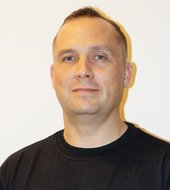
I've studied Jundokan Goju Ryu in my early days of service, but never formally received rank from the dojo that I trained in while stationed near Anchorage, Alaska. I've also most recently studied Uechi Ryu under Sensei George Mattson via his online program and skype private lessons. I completed a study of Uechi Ryu's Sanchin, but elected to not continue in Uechi Ryu as my interest has always been more in Shuri-te derived systems.
So, that's the most direct connection that I have with Okinawan Karate. Indirectly, I achieved a 1st Dan in Tang Soo Do prior to my living home for my military service. As you know, Tang Soo is derived from Shotokan and adopted the use of its kata in its syllabus. That's an indirect link at best, however. There was no pure Okinawan Karate in my town growing up.
So, that's the most direct connection that I have with Okinawan Karate. Indirectly, I achieved a 1st Dan in Tang Soo Do prior to my living home for my military service. As you know, Tang Soo is derived from Shotokan and adopted the use of its kata in its syllabus. That's an indirect link at best, however. There was no pure Okinawan Karate in my town growing up.
10 differences between Okinawan & Japanese Karate
This article was written by Karate Jesse, here is the link to the article http://www.karatebyjesse.com/10-differences-okinawan-karate-japanese-karate
There are MANY differences between Okinawan and Japanese Karate.
Check it out:
#1. Higher Stances
Okinawan shiko-dachi stanceOkinawan Karate has a lot of high stances.
Why?
Because it’s natural.
For many people, this is good news!
Deep Karate stances can often feel “forced”, especially for tall Westerners, and tend to be painful for knees/feet/back.
(Particularly if done wrong.)
To put things into perspective, an Okinawan zenkutsu-dachi can be half the length of a Japanese one.
Perfect for lazy bastards like me!
But…
Will these kinds of high stances build leg strength and stamina?
Not really.
That’s not the point either.
The stances of Okinawan Karate are meant to be practical when applied in self-defense, since they can be quickly and effortlessly reached from your everyday stance.
That’s the point.
#2. “Why” Over “How”
Seisan bunkai by Miyagi Chojun If you practice Karate in Okinawa, you will often hear the word “imi”.
“Imi” translates to “meaning” in English.
Hence, in Okinawan Karate, the meaning of a technique is often more stressed than how the technique is actually executed.
The Why is more important than the How.
Japanese Karate, on the other hand, is often more focused on the How rather than the Why.
How come?
There are three main reasons for this:
(How to twist your hips, how to adjust your feet, how to shift your weight etc.)
But an Okinawan sensei will often remind you of the purpose of a kata instead.
The “bunkai”.
Get it?
#3. No “Osu! / Oss!” In Japanese Karate, the verbal command “Osu!” (pronounced “Oss!”) is used sometimes.
This phenomenon has also spread to the West, and is even getting popular in Brazilian Jiu-Jitsu and MMA too.
But…
I’ve NEVER heard the term “Osu! / Oss!” being used in Okinawa.
Why?
The reason can be found here:
The Meaning of “Osu” / “Oss” (+ When You Should NEVER Say It)
Okinawans generally use the word “Hai!”
#4. It’s Not a Sport. It’s a Lifestyle.
75-year old Tsuneko Machida, 4th dan. She started Karate at 63-years old. When Karate was introduced to Japan, many things changed.
For instance, people started competing.
Most people don’t know this, but Japanese Karate practitioners actually changed many kata and added tons of new kumite techniques, for the sole purpose of scoring points in competitions.
Trust me; you’ll never see an Okinawan sensei teach you a spinning hook kick to the head!
Don’t get me wrong though; people in Okinawa compete too these days. But there’s a big difference in their approach.
In Okinawan, Karate is not a sport.
It’s a lifestyle.
Like one of my Okinawan friends, a 7th dan Shorin-ryu sensei, once told me:
“Karate is part of our cultural identity”.
It truly is.
Karate’s heritage is everywhere in Okinawa, and it’s such a natural part of their culture that it simply makes no sense to compete in it.
A growing bamboo does not compete with the bamboo next to it.
Right?
#5. Chinkuchi Over Kime In Japanese Karate, the concept of “kime” is super important.
You’ve probably heard the term.
The word “kime” comes from the root “kimeru”, which literally means “to decide” or “to fix”.
Kime signifies that instant stop at the end of your technique.
(Read more: What is “Kime”? Dr. Lucio Maurino (World Karate Champion) Explains & Demonstrates)
Now check this out…
In Okinawan Karate, there is something else:
Chinkuchi!
You see, in Okinawan Karate it’s not important to freeze the technique quickly.
It’s more important to transfer all of your energy into the opponent – like a shockwave. To do this, you need an explosive release of full-body power.
Have you ever seen the famous “one-inch punch” by Bruce Lee?
It’s a perfect example of chinkuchi.
(Read more: Chinkuchi – Another Exotic Okinawan Karate Word)
It’s all about power.
#6. Kobudo Weapons
Teaching Kobudo in my dojo. The eiku (oar) is the highest weapon in Okinawan Kobudo. Japanese Karate is mostly empty-handed.
But in Okinawa, almost every dojo has weapons on the wall.
Why?
Because they practice Kobudo – the art of handling Karate’s ancient combat tools.
The most common Kobudo weapons are:
But a long time ago, rural Okinawa was a very dangerous place.
Most thugs carried weapons.
And if you’ve never practiced with weapons, it’s hard to defend against one.
Therefore, old-school Karate masters were also masters of Kobudo.
(Related reading: Exposing The Lost Secret of Matsumura’s Mysterious Bo Staff)
Like Nakamoto Masahiro, 10th dan Okinawan Kobudo, once told me after we finished training in his dojo:
“Karate and Kobudo is like brother and sister. Never separate.”
These days, most Karate dojos in Okinawa practice very little Kobudo.
But trust me – they know something!
In Japanese Karate, it’s practiced even less…
If at all.
#7. Old-School Strength Tools Okinawan Karate masters always promote physical conditioning.
Because if you’re weak and frail, you simply cannot defend yourself optimally!
So, they developed tons of crazy tools to strengthen & condition their bodies.
This gear is still being used in Okinawan Karate today.
Some of my favorites are:
But in Okinawa, you find them in every corner of the dojo.
They are essential.
#8. Tuidi Techniques
Motobu Choki applying tuidi (Naihanchin)Next, we have something called “tuidi”.
While Japanese Karate approaches combat from a long distance range, Okinawan Karate prefers a close range.
Here’s where tuidi comes into play.
Tuidi is the Okinawan method of grabbing, seizing, twisting and dislocating an opponent’s joints.
Quite naturally, this aspect of combat also involves other nasty things like choking, unbalancing, throwing, trapping hands, hitting pressure points and nerve bundles.
These things are rarely taught in regular Japanese Karate classes.
Why?
Because, again, Japanese Karate was heavily influenced by pre-existing martial traditions when it was introduced from Okinawa. The original, short, fighting range was changed to a longer one – and concepts like “maai” (engagement distancing) were borrowed straight from Japanese samurai sword fencing (Kendo).
Therefore, the concept of “tuidi” is not as important in Japanese Karate.
But in Okinawan Karate it’s still being practiced.
A common Okinawan exercise for practicing tuidi is called “kakie” – a sensory flow drill, often called “pushing hands” in the West.
(Related reading: 2 Forgotten (But Deadly) Techniques of Okinawan Karate)
In fact, when you closely examine old-school kata, you will see that the bunkai of the kata movements make much more sense in the close range.
Try it and you will see.
9. Individuals Over Mass Training
Funakoshi Gichin teaching Karate to students at Keio UniversityAs you might have figured out by now, Okinawan Karate has many unique quirks.
To truly understand it, you have to experience it up close.
Basically, you need personal attention directly from a sensei.
This is why Okinawan Karate is hard to teach a big group of people at once – you simply cannot give adequate individual attention to a group of 50 students or more!
Japanese Karate, on the other hand, was tailored for huge groups.
Why?
Because that was the goal when Karate was introduced to the various universities around Tokyo, Osaka and Kyoto in the middle of the 20th century.
This phenomenon, along with tournaments, is the reason why many movements of Japanese Karate are bigger and more simplified than Okinawan Karate movements.
They need to be easily seen by huge masses of people!
In Okinawan Karate, it’s the opposite.
In fact, the average Okinawan dojo has room for like 10-15 people. This spartan training environment actually adds to the focus of individualization over mass instruction.
(Read more about training Karate in Okinawa: The Practical Foreigner’s Guide to Training Karate in Okinawa – The Birthplace of Karate)
Sadly, this is the reason many Okinawan masters can’t make a living from Karate.
They don’t have room for enough students.
10. Uchinaa-guchi
The Okinawan flag Lastly, here’s something you might have noticed throughout the article:
Okinawan Karate has its own language.
“Uchinaa-guchi”.
(Literally: “Okinawan mouth.”)
Many Okinawan Karate terms I’ve mentioned so far – like “chinkuchi” and “tuidi” – are not Japanese words. They are ancient terms of the Okinawan language.
Some other popular ones are:
Muchimi, Gamaku, Meotode, Chinkuchi, Machiwara, Ti, Shinshii, Toudi etc.
(Those of you who attended my seminars will recognise these.)
This language is still used by traditional masters in Okinawa.
For example; when I went to Okinawa last summer, I learnt a new kata called Tomari Chinto. In one particular technique, my sensei told me to have a spring-like upward movement, called “hanchaatii”. Huh? I was clueless! What did he mean? When he saw my confusion, he quickly excused himself and said it in proper Japanese instead; “hana ageru”.
Now I understood!
This goes to show that Uchinaa-guchi is still very much alive today.
But it’s never used in Japanese Karate.
Only in Okinawa.
And with those words I end this list of 10 differences between Okinawan & Japanese Karate.
There are MANY differences between Okinawan and Japanese Karate.
Check it out:
#1. Higher Stances
Okinawan shiko-dachi stanceOkinawan Karate has a lot of high stances.
Why?
Because it’s natural.
For many people, this is good news!
Deep Karate stances can often feel “forced”, especially for tall Westerners, and tend to be painful for knees/feet/back.
(Particularly if done wrong.)
To put things into perspective, an Okinawan zenkutsu-dachi can be half the length of a Japanese one.
Perfect for lazy bastards like me!
But…
Will these kinds of high stances build leg strength and stamina?
Not really.
That’s not the point either.
The stances of Okinawan Karate are meant to be practical when applied in self-defense, since they can be quickly and effortlessly reached from your everyday stance.
That’s the point.
#2. “Why” Over “How”
Seisan bunkai by Miyagi Chojun If you practice Karate in Okinawa, you will often hear the word “imi”.
“Imi” translates to “meaning” in English.
Hence, in Okinawan Karate, the meaning of a technique is often more stressed than how the technique is actually executed.
The Why is more important than the How.
Japanese Karate, on the other hand, is often more focused on the How rather than the Why.
How come?
There are three main reasons for this:
- The meaning of many techniques was lost during the historical transmission of Karate from Okinawa to Japan. If you don’t know the Why, it’s more sensible to teach the How.
- The purpose of Japanese Karate is not aligned with the purpose of Okinawan Karate anymore. Historically speaking, Japanese Karate was molded to suit the spiritual Way (“Karate-Do”) of contemporary martial arts like Judo, Kendo, Aikido etc., with the main purpose of developing the character of its participants (through the How). The purpose of Okinawan Karate has always been mainly self-defense oriented (the Why).
- The level of martial knowledge , i.e. biomechanics of Budo, is much deeper in Japan. Many techniques of Japanese Karate are influenced by other, more established, Japanese martial arts where the optimal movement patterns are well-researched.
(How to twist your hips, how to adjust your feet, how to shift your weight etc.)
But an Okinawan sensei will often remind you of the purpose of a kata instead.
The “bunkai”.
Get it?
#3. No “Osu! / Oss!” In Japanese Karate, the verbal command “Osu!” (pronounced “Oss!”) is used sometimes.
This phenomenon has also spread to the West, and is even getting popular in Brazilian Jiu-Jitsu and MMA too.
But…
I’ve NEVER heard the term “Osu! / Oss!” being used in Okinawa.
Why?
The reason can be found here:
The Meaning of “Osu” / “Oss” (+ When You Should NEVER Say It)
Okinawans generally use the word “Hai!”
#4. It’s Not a Sport. It’s a Lifestyle.
75-year old Tsuneko Machida, 4th dan. She started Karate at 63-years old. When Karate was introduced to Japan, many things changed.
For instance, people started competing.
Most people don’t know this, but Japanese Karate practitioners actually changed many kata and added tons of new kumite techniques, for the sole purpose of scoring points in competitions.
Trust me; you’ll never see an Okinawan sensei teach you a spinning hook kick to the head!
Don’t get me wrong though; people in Okinawa compete too these days. But there’s a big difference in their approach.
In Okinawan, Karate is not a sport.
It’s a lifestyle.
Like one of my Okinawan friends, a 7th dan Shorin-ryu sensei, once told me:
“Karate is part of our cultural identity”.
It truly is.
Karate’s heritage is everywhere in Okinawa, and it’s such a natural part of their culture that it simply makes no sense to compete in it.
A growing bamboo does not compete with the bamboo next to it.
Right?
#5. Chinkuchi Over Kime In Japanese Karate, the concept of “kime” is super important.
You’ve probably heard the term.
The word “kime” comes from the root “kimeru”, which literally means “to decide” or “to fix”.
Kime signifies that instant stop at the end of your technique.
(Read more: What is “Kime”? Dr. Lucio Maurino (World Karate Champion) Explains & Demonstrates)
Now check this out…
In Okinawan Karate, there is something else:
Chinkuchi!
You see, in Okinawan Karate it’s not important to freeze the technique quickly.
It’s more important to transfer all of your energy into the opponent – like a shockwave. To do this, you need an explosive release of full-body power.
Have you ever seen the famous “one-inch punch” by Bruce Lee?
It’s a perfect example of chinkuchi.
(Read more: Chinkuchi – Another Exotic Okinawan Karate Word)
It’s all about power.
#6. Kobudo Weapons
Teaching Kobudo in my dojo. The eiku (oar) is the highest weapon in Okinawan Kobudo. Japanese Karate is mostly empty-handed.
But in Okinawa, almost every dojo has weapons on the wall.
Why?
Because they practice Kobudo – the art of handling Karate’s ancient combat tools.
The most common Kobudo weapons are:
- bo
- sai
- tonfa
- nunchaku
- kama
- timbe/rochin
- tekko
- kuwa
- sansetsu kon
- nunti bo
But a long time ago, rural Okinawa was a very dangerous place.
Most thugs carried weapons.
And if you’ve never practiced with weapons, it’s hard to defend against one.
Therefore, old-school Karate masters were also masters of Kobudo.
(Related reading: Exposing The Lost Secret of Matsumura’s Mysterious Bo Staff)
Like Nakamoto Masahiro, 10th dan Okinawan Kobudo, once told me after we finished training in his dojo:
“Karate and Kobudo is like brother and sister. Never separate.”
These days, most Karate dojos in Okinawa practice very little Kobudo.
But trust me – they know something!
In Japanese Karate, it’s practiced even less…
If at all.
#7. Old-School Strength Tools Okinawan Karate masters always promote physical conditioning.
Because if you’re weak and frail, you simply cannot defend yourself optimally!
So, they developed tons of crazy tools to strengthen & condition their bodies.
This gear is still being used in Okinawan Karate today.
Some of my favorites are:
- Makiwara – a wooden, springy, punch board wrapped in straw. The saying “a dojo without a makiwara is not a dojo” should tell you how important this impact tool is in Okinawa.
- Chi-ishi – a stone weight attached to a short wooden stick, made to be swung around the body to strengthen arms, wrists, hands, core and back.
- Ishi-sashi – a hand-held concrete weight in the shape of a padlock, originally made of stone. It’s used in the same way as a modern kettlebell, but with a Karate twist.
- Nigiri-game – big ceramic jars filled with sand, which you grip around the rim (one in each hand) while walking in different stances to strengthen your grip, wrists, arms, legs and core.
- Tou – a standing bundle of bamboo tied together at the top and bottom. You strike it with your forearms, fingers and elbows (almost like a makiwara) but also with your legs, to condition your shins.
But in Okinawa, you find them in every corner of the dojo.
They are essential.
#8. Tuidi Techniques
Motobu Choki applying tuidi (Naihanchin)Next, we have something called “tuidi”.
While Japanese Karate approaches combat from a long distance range, Okinawan Karate prefers a close range.
Here’s where tuidi comes into play.
Tuidi is the Okinawan method of grabbing, seizing, twisting and dislocating an opponent’s joints.
Quite naturally, this aspect of combat also involves other nasty things like choking, unbalancing, throwing, trapping hands, hitting pressure points and nerve bundles.
These things are rarely taught in regular Japanese Karate classes.
Why?
Because, again, Japanese Karate was heavily influenced by pre-existing martial traditions when it was introduced from Okinawa. The original, short, fighting range was changed to a longer one – and concepts like “maai” (engagement distancing) were borrowed straight from Japanese samurai sword fencing (Kendo).
Therefore, the concept of “tuidi” is not as important in Japanese Karate.
But in Okinawan Karate it’s still being practiced.
A common Okinawan exercise for practicing tuidi is called “kakie” – a sensory flow drill, often called “pushing hands” in the West.
(Related reading: 2 Forgotten (But Deadly) Techniques of Okinawan Karate)
In fact, when you closely examine old-school kata, you will see that the bunkai of the kata movements make much more sense in the close range.
Try it and you will see.
9. Individuals Over Mass Training
Funakoshi Gichin teaching Karate to students at Keio UniversityAs you might have figured out by now, Okinawan Karate has many unique quirks.
To truly understand it, you have to experience it up close.
Basically, you need personal attention directly from a sensei.
This is why Okinawan Karate is hard to teach a big group of people at once – you simply cannot give adequate individual attention to a group of 50 students or more!
Japanese Karate, on the other hand, was tailored for huge groups.
Why?
Because that was the goal when Karate was introduced to the various universities around Tokyo, Osaka and Kyoto in the middle of the 20th century.
This phenomenon, along with tournaments, is the reason why many movements of Japanese Karate are bigger and more simplified than Okinawan Karate movements.
They need to be easily seen by huge masses of people!
In Okinawan Karate, it’s the opposite.
In fact, the average Okinawan dojo has room for like 10-15 people. This spartan training environment actually adds to the focus of individualization over mass instruction.
(Read more about training Karate in Okinawa: The Practical Foreigner’s Guide to Training Karate in Okinawa – The Birthplace of Karate)
Sadly, this is the reason many Okinawan masters can’t make a living from Karate.
They don’t have room for enough students.
10. Uchinaa-guchi
The Okinawan flag Lastly, here’s something you might have noticed throughout the article:
Okinawan Karate has its own language.
“Uchinaa-guchi”.
(Literally: “Okinawan mouth.”)
Many Okinawan Karate terms I’ve mentioned so far – like “chinkuchi” and “tuidi” – are not Japanese words. They are ancient terms of the Okinawan language.
Some other popular ones are:
Muchimi, Gamaku, Meotode, Chinkuchi, Machiwara, Ti, Shinshii, Toudi etc.
(Those of you who attended my seminars will recognise these.)
This language is still used by traditional masters in Okinawa.
For example; when I went to Okinawa last summer, I learnt a new kata called Tomari Chinto. In one particular technique, my sensei told me to have a spring-like upward movement, called “hanchaatii”. Huh? I was clueless! What did he mean? When he saw my confusion, he quickly excused himself and said it in proper Japanese instead; “hana ageru”.
Now I understood!
This goes to show that Uchinaa-guchi is still very much alive today.
But it’s never used in Japanese Karate.
Only in Okinawa.
And with those words I end this list of 10 differences between Okinawan & Japanese Karate.
sensei Patrick fallay has taken and passed the 9th dan examination in Okinawa with sensei takaya Yabiku.
going to Okinawa to train with sensei yabikuSensei Patrick Fallay went to Okinawa for two weeks in April to not only train with Sensei, but also take his 9th Dan examination. Even though Sensei Patrick Fallay has had several strokes he still manages to put forth the effort to train in Karate.
He did not simply receive his 9th Dan, but had to take an examination which took the whole day. He will be returning with his wife in May, when he and his wife will train with Sensei. Lets give Sensei a hardy congratulations on passing his 9th Dan examination. |

Sensei Patrick Fallay will be going to Okinawa to train with Sensei Takaya Yabiku for two weeks in April, I recommended to Sensei that he give the 9th Dan examination to Sensei Fallay. Sensei Fallay is presently an 8th Dan and has been since 2001.
He was recently issued an 8th Dan by Sensei for recognition of his present rank of 8th Dan.
We all hope that he will have an exciting time training with sensei and I hope he will pass his examination.
One thing most people do not know is that examination fees are paid in advance, should you not meet Sensei's standards for the examination you have one more chance to re-take the examination. Should you fail the second time your will not be refunded your money.
So you do need to know your stuff, for this high rank it is not how well you do physically but more on the knowledge, character and what you have done for Karate. Sensei Fallay has also been teaching in the Philippines, Cambodia and the disabled children in Dubai, that should be a plus for him. I look forward to hearing from Sensei Fallay while in Okinawa. Everyone wish him the best.
He was recently issued an 8th Dan by Sensei for recognition of his present rank of 8th Dan.
We all hope that he will have an exciting time training with sensei and I hope he will pass his examination.
One thing most people do not know is that examination fees are paid in advance, should you not meet Sensei's standards for the examination you have one more chance to re-take the examination. Should you fail the second time your will not be refunded your money.
So you do need to know your stuff, for this high rank it is not how well you do physically but more on the knowledge, character and what you have done for Karate. Sensei Fallay has also been teaching in the Philippines, Cambodia and the disabled children in Dubai, that should be a plus for him. I look forward to hearing from Sensei Fallay while in Okinawa. Everyone wish him the best.
New Director for Matsusokan Germany

I am promoting Sensei Boris Wrazidlo to the position of Director Of Matsusokan Germany, he will replace Sensei Afra Johmann-Anderer. Sensei Wrazidlo is the Senior Trainer for Matsusokan Karate in Germany, he has been with Matsusokan since the mid 1990's he is very dedicated to Matsusokan and an excellent Karateka. Sensei Wrazidlo is the third person from the left in the black Gi. He just completed a seminar with the other Karateka in the photograph. Sensei Wrazidlo attends seminars with different styles of karate to further his knowledge of Karate along with weapons training. Most of Sensei Wrazidlo free time is spent on teaching and learning Karate when he is not at work, a very demanding schedule.
promotion to chairperson of Matsusokan karate europe

I am pleased to announce that Sensei Afra Johmann-Anderer 7th Dan has been promoted by me, with approval from Sensei Yabiku of Okinawa Matsusokan Karate association to Difrector of Europe. She was the Director for Matsusokan Karate Germany since 1998. She has devoted all her free time to teaching Karate and keeping the Dojo together. She was a brown belt in Shotokan Karate when she joined my Dojo in Karlsbad Germany in 1991, so her experience in Karate starts before she joined Matsusokan.
promotion to chairman of Okinawa shorin-ryu Matsusokan karate-do association
I am honored to have been promoted by Yabiku Takaya Sensei to Dai Sensei of Okinawa Matsusokan Karate Association, Okinawa Japan.
I was with Sensei Ron Lindsey under Sensei Kuda at the time in 1989 I was moving to Germany and with the advice of Sensei Ron Lindsey, I joined Sensei Yabiku's Organization in Okinawa. I have been with Sensei Yabiku since May of 1989 and opened the first Matsusokan Dojo in Jagsthausen, Germany in 1989. The second Dojo I opened in Karlsbad, Germany and to this day is still active under the leadership of Sensei Afra Johmann-Anderer and Boris Wrazidlo, and the other blackbelts.
I was with Sensei Ron Lindsey under Sensei Kuda at the time in 1989 I was moving to Germany and with the advice of Sensei Ron Lindsey, I joined Sensei Yabiku's Organization in Okinawa. I have been with Sensei Yabiku since May of 1989 and opened the first Matsusokan Dojo in Jagsthausen, Germany in 1989. The second Dojo I opened in Karlsbad, Germany and to this day is still active under the leadership of Sensei Afra Johmann-Anderer and Boris Wrazidlo, and the other blackbelts.
Promotions
welcome our newest member of Matsusokan jeff crook, 4th dan from Olive Branch, MS USA

I began studying Kobudo with Shihan Michio Nishiuchi. I have been studying Kobudo for six years now.
I began developing my own curriculum of personal karate study, drawing from many sources. I currently practice the three Naihanchi kata and Matsumura No Passai as taught by Shubukan Shorin-Ryu, the Ji'in-Jitte-Jion kata group, and Tomari No Wanshu and Matsumura No Seisan as taught by Seibukan Shorin-Ryu.
In Kobudo I practice Oshiro No Kun, Shiromatsu No Kun, Shushi No Kun, Choun No Kun, Sakugawa No Kun, and Tsuken No Kun, as well as Yaraguwa No Tonfa and Tsuken Sunakake No Eku.
The style of teaching that you briefly describe on your website is exactly how I study, I have been thinking of finding some small space somewhere where I could open my own Dojo for the kind of karate and Kobudo that I study and very much would like too share with others.
I began developing my own curriculum of personal karate study, drawing from many sources. I currently practice the three Naihanchi kata and Matsumura No Passai as taught by Shubukan Shorin-Ryu, the Ji'in-Jitte-Jion kata group, and Tomari No Wanshu and Matsumura No Seisan as taught by Seibukan Shorin-Ryu.
In Kobudo I practice Oshiro No Kun, Shiromatsu No Kun, Shushi No Kun, Choun No Kun, Sakugawa No Kun, and Tsuken No Kun, as well as Yaraguwa No Tonfa and Tsuken Sunakake No Eku.
The style of teaching that you briefly describe on your website is exactly how I study, I have been thinking of finding some small space somewhere where I could open my own Dojo for the kind of karate and Kobudo that I study and very much would like too share with others.
welcome to new member of Matsusokan mark Brereton 3rd kyu from Staffordshire uk

I embarked upon my martial arts journey in 1991 whilst practicing Lau Gar Gong Fu, and after
break during my Art College education I started to train again in Taekwondo and Jujitsu. Although, I was not fully comfortable with these arts as I felt they did not suit my individual approach. Then, suddenly through personal illness I had to take some time out, after a near death experience due to a virus that attacked my heart, I started to practice Kiko and Reiki to regain my health and stamina. These arts had such a positive effect on my physical and mental health that they also led me onto a new career path and I retrained in holistic health arts to help others and share my story. I now practice Japanese Health Arts such as Usui Reiki Ryoho, Kiko and Anma. I then progressed with a short journey into Shukokai Karate until I decided to practice a more practical version of Karate Jutsu as I have never really been interested in sport karate. I am also very interested in developing my studies further with practical, historical and theoretical knowledge in Okinawan Kata and Kobudo.
break during my Art College education I started to train again in Taekwondo and Jujitsu. Although, I was not fully comfortable with these arts as I felt they did not suit my individual approach. Then, suddenly through personal illness I had to take some time out, after a near death experience due to a virus that attacked my heart, I started to practice Kiko and Reiki to regain my health and stamina. These arts had such a positive effect on my physical and mental health that they also led me onto a new career path and I retrained in holistic health arts to help others and share my story. I now practice Japanese Health Arts such as Usui Reiki Ryoho, Kiko and Anma. I then progressed with a short journey into Shukokai Karate until I decided to practice a more practical version of Karate Jutsu as I have never really been interested in sport karate. I am also very interested in developing my studies further with practical, historical and theoretical knowledge in Okinawan Kata and Kobudo.
welcome to new member of Matsusokan Sensei john peeler ju-dan from florida, usa.

I started Shorinji ryu karate under Sensei Kise in Okinawa December 1967 and he transitioned completely under GM Soken’s Matsumura Orthodox around March 1968. I had the privilege to also train with Sensei Shian Toma, Sensei Yuichi Kuda, Sensei Seiki Arakaki, Ed Duga, Sensei Kinjo and GM Shigeru Nakumura. While stationed with the U.S.Navy I trained in Judo paid by the Navy to compete on the Navy’s Judo team representing Okinawa. In 1973 in the U.S. as a civilian I trained in Aikido under Sensei Tomlinson along with my karate with Olympic Karate Studios. 1985 era I took up Nei Dan Qi-gong but did not get serious about that till early 2000’s. In 1977 I got together with Sensei Kise and went under him with S.M.O.K.A. for a year but that dissolved in 1978 when Kise broke away from Soken and SMOKA and Kise separated. Mid 2000’s I got back with Tom Hunnicutt, my senior, whom I trained with in Okinawa and with the Judo Team, and took up Matsumura Bushi Jutsu under the A.O.O.M K A.
welcome to new member of Matsusokan from Puerto rico, Carlos Alberto Rodriguez Gonzalez

Mr. Carlos Alberto Rodriguez Gonzalez practices Goju Ryu karate in Puerto Rico and is a Ni-dan.
My first training in Okinawan Goju Ryu Karate Do began with the Hanshi Joseph Soto, who promoted me to Sho-Dan in the 2010. Hanshi Ramon Colon Velez of Puerto Rico from Miami.Buscando a master of Okinawan Goju Ryu Karate Do was my next Sensei I start to practice with that master and on September 2014 was promoted to the rank of Nidan. I was also promoted to the rank of Ni Dan by the Hanshi Raymond Hermann of the All - American Goju International Karate Association. I like traditional Okinawan Karate that is why I have become a member of Matsusokan.
My first training in Okinawan Goju Ryu Karate Do began with the Hanshi Joseph Soto, who promoted me to Sho-Dan in the 2010. Hanshi Ramon Colon Velez of Puerto Rico from Miami.Buscando a master of Okinawan Goju Ryu Karate Do was my next Sensei I start to practice with that master and on September 2014 was promoted to the rank of Nidan. I was also promoted to the rank of Ni Dan by the Hanshi Raymond Hermann of the All - American Goju International Karate Association. I like traditional Okinawan Karate that is why I have become a member of Matsusokan.
welcome to new member of matsusokan from Italy, Sensei marco galli

I started to practice martial arts at age 5 in 1977. I started with judo but after two years I started practicing karate . My Master, 8th Dan Matsubayashi Shorinryu, taught Shorinryu in Nazional Federation of Karate. In 1989 I pass the exam for black belt. In 2010 a national commission has honored me with the rank of 6th Dan master in Shorinryu. Recently a national governing body of sport and martial arts assigned me and honored me with the 7th Dan in Shorinryu.
Okinawa Karate seminar in der nähe von stuttgart
|
An diesem Wochenende (30.04/01.05.2016) waren Alexander Nees (4.Kyu) und Sensei Boris Wrazidlo (5. Dan) vom Deutschen Matsusokan Karate und Kobudo Verein Karlsbad e.V. Auf einem Seminar "Little Okinawa 2016" in der Kampfsportschule Esslingen, dieses Dojo wird durch Shihan Andree Kielholtz (7. Dan) geleitet.
Das Seminar selbst wurde durch Shihan Andree Kielholtz und Nils A. Scheiring (4. Dan Ryukyu Kempo) geleitet. Am Samstag standen folgende Themen auf dem Programm Kyusho Ziele am Kopf und Kuatsu, Seyunchin Kata und Bunkai, Kyusho Jitsu Bunkai der Niseishi, Tegumi/Flowdrills aus der Kata Seyunchin. Der zweite Tag war ebenso gut mit Themen belegt, Drills/Körpermechanik und Stellungen, Kobudo Tanbo, Kyusho Jitsu und Messerverteidigung, Batto Jutsu. Das ganze Seminar war sehr spannend und lehrreich. Man könnte viele Kontakte knüpfen und gemeinsam lernen und sich austauschen. Getreu dem Motto des Seminars: "Ichariba Choodee, Once we meet and talk, we are brothers and sisters" Von links nach rechts: Nils A. Scheiring (4. Dan Ryukyu Kempo/Kyusho Instructor), Alexander Nees (4. Kyu), Sensei Boris Wrazidlo (5. Dan), Shihan Andree Kielholtz (7. Dan) |
Okinawa karate seminar near Stuttgart germany

This weekend (30.04 / 01.05.2016) were Alexander Nees (4th Kyu) and Sensei Boris Wrazidlo (5th Dan) from the German Matsusokan Karate and Kobudo Club Karlsbad e.V. At a seminar "Little Okinawa 2016" in the martial arts school Esslingen, this Dojo is led by Shihan Andree Kielholtz (7th Dan).
The seminar itself was led by Shihan Andree Kielholtz and Nils A. Scheiring (4th Dan Ryukyu Kempo). On Saturday the following topics were on the agenda Kyusho targets the head and Kuatsu, Seyunchin Kata and Bunkai, Kyusho Jitsu Bunkai of Niseishi, Tegumi / Flow Drills from Kata Seyunchin.
The second day was also well documented issues, Drills / body mechanics and positions, Kobudo Tanbo, Kyusho Jitsu and knife defense, battōjutsu.
The whole seminar was very interesting and instructive. One could make many contacts and learn together and exchange ideas. True to the motto of the seminar: "Ichariba Choodee, Once we meet and talk, we are brothers and sisters"
From left to right:
Nils A. Scheiring (4. Dan Ryukyu Kempo/Kyusho Instructor), Alexander Nees (4. Kyu), Sensei Boris Wrazidlo (5. Dan), Shihan Andree Kielholtz (7. Dan)
The seminar itself was led by Shihan Andree Kielholtz and Nils A. Scheiring (4th Dan Ryukyu Kempo). On Saturday the following topics were on the agenda Kyusho targets the head and Kuatsu, Seyunchin Kata and Bunkai, Kyusho Jitsu Bunkai of Niseishi, Tegumi / Flow Drills from Kata Seyunchin.
The second day was also well documented issues, Drills / body mechanics and positions, Kobudo Tanbo, Kyusho Jitsu and knife defense, battōjutsu.
The whole seminar was very interesting and instructive. One could make many contacts and learn together and exchange ideas. True to the motto of the seminar: "Ichariba Choodee, Once we meet and talk, we are brothers and sisters"
From left to right:
Nils A. Scheiring (4. Dan Ryukyu Kempo/Kyusho Instructor), Alexander Nees (4. Kyu), Sensei Boris Wrazidlo (5. Dan), Shihan Andree Kielholtz (7. Dan)
welcome to new member of matsusokan from Dubai mR. Patrick fALLAY

I started karate in October 1972 with Hiroshi Gamaito who was arrived in France in 1960 before going to Belgium. He promoted me to 3rd Dan on June 1984, he passed away on September 1984. My uncle, Bigot sensei, his eldest student, took over and promoted me to 8th Dan in September 2001, he retired at that time. I made contact with Chuck Chandler in 1999 before becoming member of his association in 2000. In 2002, I received a 8th Dan diploma with seal from Yabiku sensei. I stayed with Chandler association representing Yabiku sensei for a year before he passed away. Later I was contacted by Mr. Griffin and Joyce Stech both telling me they where the official representative of Yabiku Sensei. I did not registered with them. I found you on the website Matsusokankarate.org, and contacted you that is how I came to join present Okinawa Matsusokan Karate and Kobudo.
welcome to new member of matsusokan from pHILIPPINES SENSEI MYRINE E. JANE

Myrine Jane started Matsumura Shurite with me in 2003, in the Philippines and was promoted by me to 5th Dan, in November 2015. Here full name is Myrine E. Jane, Philippines citizen.
welcome to new member of matsusokan from india, Miss Dimple valia

Miss Dimple valia is the assistant instructor for sensei Dhansukh Valia, she hold the rank of Sho dan. Please everyone welcome our newest members, we are very pleased that they have chosen to become members of Matsusokan and represent in India Takaya Yabiku O'sensei of Matsusokan.
welcome to our newest member the director for matsusokan india Sensei dhansukh valia

Please welcome our newest Member, current rank is Go dan (5th Dan Gojuryu) he will be representing O'Sensei Takaya Yabiku of Okinawa Matsusokan Karate and Kobudo for India
Sensei Valia received his Go-dan in August 2000.
Sensei Valia received his Go-dan in August 2000.
welcome to our newest yudansha member
|
Konnor Lyons age 14, has passed his Black belt examination. He has been studying Karate since April of 2012 with me one on one. He will be promoted to Sho-dan by Yabiku Sensei on my recommendation.
The Kata he performed for the examination are Uechiryu Sanchin, Naihanchi Shodan, Naihanchi Nidan, Isshinryu Wansu, Uechiryu Seisan, Gojuryu Seisan, Isshinryu Seisan, and Passai Dai. Weapons Kata Bo: Shushi No Kun, and Basics for Kama, Nunchucks and Tuifa. |
new member Dr. Steve Godjas

Please welcome our newest Member, current rank is Shodan (Hakutsuru) from the Okinawa Shorin Ryu Kobukan Karate Federation.
The last ten years have been devoted to kung fu but I had studied karate, off and on from childhood, (I cannot recall the style), from a Japanese neighbor growing up in New Jersey.
My formal training in Okinawan karate has been through the Okinawan Kobukan Karate Federation from Kyoshi Lawrence Vellucci.
My kata list is:
Oso Hakutsuru Sho (Mountain Crane I)
Oso Hakutsura Dai (Mountain Crane II)
Oso Hakutsuru San Hee (Mountain Crane III)
Ryuken Sanchin (Family Three Battles Fist)
Ryuto Chiken (Internal Energy Fist)
Rokishu (Six Winds Fist)
Ni Pai Po (Monk’s Crane Form)
Okaku (Master’s Crane Form)
Hakutsuru and Hakutcho:
The last ten years have been devoted to kung fu but I had studied karate, off and on from childhood, (I cannot recall the style), from a Japanese neighbor growing up in New Jersey.
My formal training in Okinawan karate has been through the Okinawan Kobukan Karate Federation from Kyoshi Lawrence Vellucci.
My kata list is:
Oso Hakutsuru Sho (Mountain Crane I)
Oso Hakutsura Dai (Mountain Crane II)
Oso Hakutsuru San Hee (Mountain Crane III)
Ryuken Sanchin (Family Three Battles Fist)
Ryuto Chiken (Internal Energy Fist)
Rokishu (Six Winds Fist)
Ni Pai Po (Monk’s Crane Form)
Okaku (Master’s Crane Form)
Hakutsuru and Hakutcho:
New Member
Yudansha & Mudansha Examinations

Kohleen Lyons has taken her Yudansha examination, on Thursday 24th of July, 2014. She was promoted to Shodan by Yabiku Sensei from Okinawa, Congratulations!!
CONGRAtULATIONS TO THE GERMAN KARATEKA ON passing their examination and PROMOTION.

Prüfungen Sommer 2014
30.07.2014
Am Dienstag den 29.07.2014 konnten zahlreiche Mitglieder des Deutschen Matsusokan Karate und Kobudo Verein Karlsbad e.V. unter den Prüfern Sensei Afra Johmann-Anderer (7.Dan) und Sensei Boris Wrazidlo (5.Dan) Ihre Gürtelprüfungen ablegen. Die reibungslos verlaufenden Prüfungen wurden durch alle Prüflinge mit Erfolg abgelegt. Wir gratulieren den Prüflingen zur bestandenen Prüfung.
v.l.n.r.: Vera Anderer (7.Kyu/Blau1), Virginia Wilde (2.Dan), Pascal Weber (3.Dan),
Sensei Afra Johmann-Anderer, Lena Stumpp (2.Dan), Matti Silber (1.Dan),
Fabian Schroth (5.Kyu/Grün1), Noah Weber (7.Kyu/Blau1), Alexander Nees (6.Kyu/Blau2),
Angelika Schroth (5.Kyu/Grün1), Heike Meissner (4.Kyu/Grün2)
Es fehlen: Heiko Oswald (3.Dan) und Johannes Büge (1.Dan)
Prüfungen Meistergrade (Dan):
3. Dan Heiko Oswald
3. Dan Pascal Weber
2. Dan Virginia Wilde
2. Dan Lena Stumpp
1. Dan Matti Silber
1. Dan Johannes Büge
Prüfungen Schülergrade (Kyu):
4. Kyu Heike Meissner (Grüngurt 2)
5. Kyu Angelika Schroth (Grüngurt 1)
5. Kyu Fabian Schroth (Grüngurt 1)
6. Kyu Alexander Nees (Blaugurt 2)
7. Kyu Vera Anderer (Blaugurt 1)
7. Kyu Noah Weber (Blaugurt 1)
7. Kyu David Freitag (Blaugurt 1)
30.07.2014
Am Dienstag den 29.07.2014 konnten zahlreiche Mitglieder des Deutschen Matsusokan Karate und Kobudo Verein Karlsbad e.V. unter den Prüfern Sensei Afra Johmann-Anderer (7.Dan) und Sensei Boris Wrazidlo (5.Dan) Ihre Gürtelprüfungen ablegen. Die reibungslos verlaufenden Prüfungen wurden durch alle Prüflinge mit Erfolg abgelegt. Wir gratulieren den Prüflingen zur bestandenen Prüfung.
v.l.n.r.: Vera Anderer (7.Kyu/Blau1), Virginia Wilde (2.Dan), Pascal Weber (3.Dan),
Sensei Afra Johmann-Anderer, Lena Stumpp (2.Dan), Matti Silber (1.Dan),
Fabian Schroth (5.Kyu/Grün1), Noah Weber (7.Kyu/Blau1), Alexander Nees (6.Kyu/Blau2),
Angelika Schroth (5.Kyu/Grün1), Heike Meissner (4.Kyu/Grün2)
Es fehlen: Heiko Oswald (3.Dan) und Johannes Büge (1.Dan)
Prüfungen Meistergrade (Dan):
3. Dan Heiko Oswald
3. Dan Pascal Weber
2. Dan Virginia Wilde
2. Dan Lena Stumpp
1. Dan Matti Silber
1. Dan Johannes Büge
Prüfungen Schülergrade (Kyu):
4. Kyu Heike Meissner (Grüngurt 2)
5. Kyu Angelika Schroth (Grüngurt 1)
5. Kyu Fabian Schroth (Grüngurt 1)
6. Kyu Alexander Nees (Blaugurt 2)
7. Kyu Vera Anderer (Blaugurt 1)
7. Kyu Noah Weber (Blaugurt 1)
7. Kyu David Freitag (Blaugurt 1)
promotion February 01, 2014

Boris Wrazidlo of Okinawa Matsusôkan Karate und Kobudô Verein Karlsbad e.V. (Germany)
has been promoted by Josef-Peter Roemer, Sensei to Go-dan (5th degree Black belt)
Boris Wrazidlo von Okinawa Matsusôkan Karate und Kobudô Verein Karlsbad e. V. (Deutschland)
ist durch den Sensei Josef-Peter Roemer , zu Go-dan (5. Grad Schwarzgurt) befördert worden.
has been promoted by Josef-Peter Roemer, Sensei to Go-dan (5th degree Black belt)
Boris Wrazidlo von Okinawa Matsusôkan Karate und Kobudô Verein Karlsbad e. V. (Deutschland)
ist durch den Sensei Josef-Peter Roemer , zu Go-dan (5. Grad Schwarzgurt) befördert worden.
RENE KRONEnWETT - RETURNING STUDENT to the Dojo in karlsbad, germany
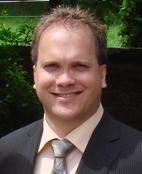
Rene Kronenwett started karate training in Germany back in the 90's and received his brown belt. He has now returned to the Dojo in Karlsbad Germany to resume his training. Rene was an exceptional student
I wish him many good years with Matsusokan Karate. He will be taking his Black belt test this summer.
I wish him many good years with Matsusokan Karate. He will be taking his Black belt test this summer.
MASTER ARCENIO ADVINCULA'S ENBUKAI 2002 OCEANSIDE, CA
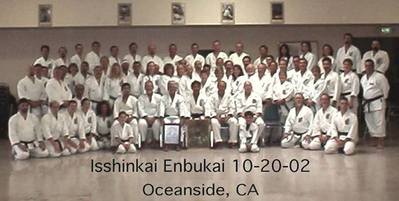
Enbukai 2002. Okinawan guest Uechi Tsuyoshi.
Bill Steigner, Walter Van Gilson, Josef-Peter Roemer, Robert Stafreed, myself all students of Shimabuku Tatsuo Sensei on Okinawa attended. Another student of Tatsuo Sensei, Sherman Harrill wanted to attend but could not because of medical reasons. As Marines do, we kept an open seat for him.
Bill Steigner, Walter Van Gilson, Josef-Peter Roemer, Robert Stafreed, myself all students of Shimabuku Tatsuo Sensei on Okinawa attended. Another student of Tatsuo Sensei, Sherman Harrill wanted to attend but could not because of medical reasons. As Marines do, we kept an open seat for him.
MATSUSOKAN TRADITIONAL KARATE Jagsthausen/Olnhausen, Germany 1991

This was my first Matsusokan Karate Dojo in Germany, the school stayed open until I had to move due to my employment. After my move I continued to train the students at the school, but eventually the travel time was just to much. Even though they paid for my mileage, I could not keep it up. So I believe it closed in 1993. It was a shame it had to close but without me being there for training it just did not work. They were all great students. Both towns are small country towns so the turnout was really great, better then in a large town.
NEW DIRECTOR - 指導師 FOR OKINAWA MATSUSOKAN TRADITIONAL KARATE GERMANY
NEUER DIREKTOR - 指導師 FUER OKINAWA MATSUSOKAN TRADITIONELL KARATE DEUTSCHLAND

Sensei Afra Johmann-Anderer has been chosen to be the new Director For Okinawa Matsusokan Traditional Karate Germany e.V.. She has been training in Okinawa Matsusokan Traditional Karate since 1990, and before this with Shotokan Karate.
She has been instrumental for growing Okinawa Matsusokan Traditional Karate e.V. in Germany since 1998. She will continue to grow Okinawa Matsusokan Karate e.V. as the new Director. At the present time there are two Dojo's in Germany, we hope to see many more in the future.
The photograph on the left is The Director Certificate for Germany issued to Afra Johmann-Anderer by Sensei Takaya Yabiku, Honbu Dojo Okinawa.
Sensei Afra Johmann-Anderer wurde von Großmeister Yabiku Takaya als Direktor des Okinawa Karate Deutschland ernannt. Sie ist seit 1990 aktives Mitglied des Okinawa Matsusokan Shorinryu Karate, sowie zuvor aktives Mitglied des Shotokan Karate. Als Mitbgünderin des Okinawa Matsusokan Karate Vereins Deutschland wird sie auch weiterhin lehren und die Gründung neuer Schulen fördern. Zur Zeit gibt es zwei Dojos in Deutschland, welchen so hoffen wir, noch weitere neue folgen werden.
She has been instrumental for growing Okinawa Matsusokan Traditional Karate e.V. in Germany since 1998. She will continue to grow Okinawa Matsusokan Karate e.V. as the new Director. At the present time there are two Dojo's in Germany, we hope to see many more in the future.
The photograph on the left is The Director Certificate for Germany issued to Afra Johmann-Anderer by Sensei Takaya Yabiku, Honbu Dojo Okinawa.
Sensei Afra Johmann-Anderer wurde von Großmeister Yabiku Takaya als Direktor des Okinawa Karate Deutschland ernannt. Sie ist seit 1990 aktives Mitglied des Okinawa Matsusokan Shorinryu Karate, sowie zuvor aktives Mitglied des Shotokan Karate. Als Mitbgünderin des Okinawa Matsusokan Karate Vereins Deutschland wird sie auch weiterhin lehren und die Gründung neuer Schulen fördern. Zur Zeit gibt es zwei Dojos in Deutschland, welchen so hoffen wir, noch weitere neue folgen werden.
PROMOTION APRIL 2013

Afra Johmann-Anderer of Okinawa Matsusôkan Karate und Kobudô Verein Karlsbad e.V. (Germany)
has been promoted by Grand Master Takaya Yabiku, to Nana-dan (7th degree Red/White Belt)
Afra Johmann-Anderer von Okinawa Matsusôkan Karate und Kobudô Verein Karlsbad e. V. (Deutschland)
ist durch den Großmeister Takaya Yabiku, zu Nana-dan (7. Grad Rot/Weissgurt) befördert worden.
has been promoted by Grand Master Takaya Yabiku, to Nana-dan (7th degree Red/White Belt)
Afra Johmann-Anderer von Okinawa Matsusôkan Karate und Kobudô Verein Karlsbad e. V. (Deutschland)
ist durch den Großmeister Takaya Yabiku, zu Nana-dan (7. Grad Rot/Weissgurt) befördert worden.
